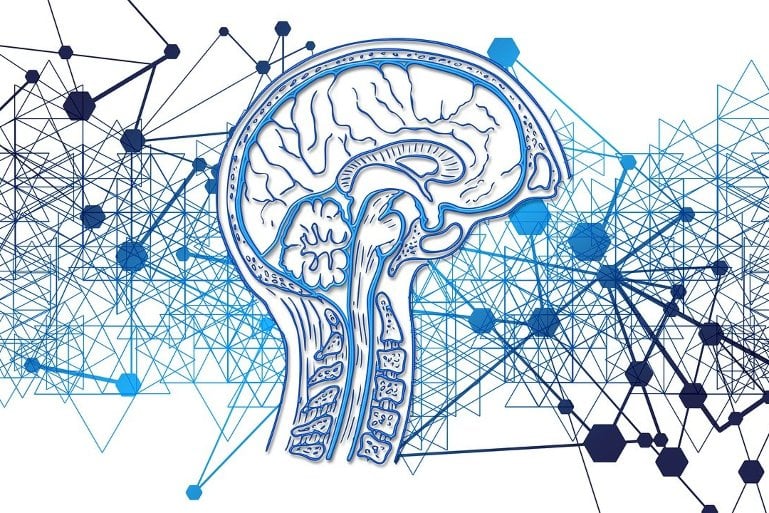Summary: The hepaCAM protein plays a critical role in the communication and coordination of astrocytes as they build synapses. The findings shed new light on potential biological mechanisms behind ASD and epilepsy.
Source: Duke University
The brain’s neurons tend to get most of the scientific attention, but a set of cells around them called astrocytes – literally, star-shaped cells – are increasingly being viewed as crucial players in guiding a brain to become properly organized.
Specifically, astrocytes, which form about half the mass of a human brain, seem to guide the formation of synapses, the connections between neurons that are formed and remodeled as we learn and remember.
A new study from Duke and UNC scientists has discovered a crucial protein involved in the communication and coordination between astrocytes as they build synapses. Lacking this molecule, called hepaCAM, astrocytes aren’t as sticky as they should be, and tend to stick to themselves rather than forming connections with their fellow astrocytes.
This finding, in studies on mice with the gene for hepaCAM knocked out of their astrocytes, is an important clue in efforts to understand several brain disorders, including cognitive decline, epilepsy and autism spectrum disorders.
The work appears June 24 in the journal Neuron.
A rare disorder called megalencephalic leukoencephalopathy (MLC) is also known to be caused by a mutation in the hepaCAM gene, and this work might provide answers about what exactly has gone wrong. MLC is a developmental disorder that grows progressively worse, causing macrocephaly (a large head), swelling of the brain’s white matter, intellectual disability and epilepsy.
By removing hepaCAM selectively from astrocytes to see what it does, “we sort of made the cells into introverts,” said senior author Cagla Eroglu, an associate professor of cell biology at the Duke University School of Medicine. “They’re normally wanting to reach out, but without hepaCAM, they started to hug themselves instead.”
“If the astrocyte makes junctions to its neighbors, then you start to have a network,” Eroglu said. “To make a functional brain, you need a functional astrocytic network.”
The researchers zeroed in on hepaCAM by looking for genes that are highly active in astrocytes and which have been implicated in brain dysfunction. They partnered with another group working on hepaCAM at the University of Barcelona, but that group has been looking at the molecule for its role in regulating chloride signaling channels in astrocytes.
The Duke group found that removing hepaCAM from astrocytes led to a synaptic network that was too easily excited and not as well dampened. “The effect on the inhibitory synapses was the strongest,” said first author Katie Baldwin, who recently became an assistant professor of cell biology and physiology at the University of North Carolina at Chapel Hill. “You’re putting the inhibition down and the excitation up, so that really could point to a mechanism for epilepsy.”

Baldwin, who did this work as a postdoctoral researcher in Eroglu’s lab, is planning to further pursue these questions in her new lab at UNC, testing whether hepaCAM-deficient mice behave differently or have changes in learning and memory, or whether they exhibit the stress and social anxiety that are markers of autism spectrum disorders. She said they might also reintroduce the disease-mutation versions of the protein to mice that were born without it to see what effects it has.
“We know hepaCAM is interacting with itself between two astrocytes, but we don’t know what it’s interacting with at the synapse,” Baldwin said. “We don’t know if it could be interacting with hepaCAM which is also found in the neurons, or if it could be some other protein that we don’t know about yet.”
Funding: This research was supported by the U.S. National Institutes of Health (R01DA047258, R01NS102237, F32 NS100392), Foerster-Bernstein Family, The Hartwell Foundation, and the European Research Council (725780 LinPro).
About this neuroscience research news
Source: Duke University
Contact: Karl Leif Bates – Duke University
Image: The image is in the public domain
Original Research: Closed access.
“HepaCAM controls astrocyte self-organization and coupling” by Katherine Baldwin et al. Neuron
Abstract
HepaCAM controls astrocyte self-organization and coupling
Highlights
- •HepaCAM regulates astrocyte competition for territory in the mouse cortex
- •Loss of astrocytic hepaCAM alters connexin 43 localization and gap junction coupling
- •Connexin 43 regulates astrocyte morphology through channel-independent mechanisms
- •Loss of astrocytic hepaCAM decreases synaptic inhibition and increases excitation
Summary
Astrocytes extensively infiltrate the neuropil to regulate critical aspects of synaptic development and function. This process is regulated by transcellular interactions between astrocytes and neurons via cell adhesion molecules. How astrocytes coordinate developmental processes among one another to parse out the synaptic neuropil and form non-overlapping territories is unknown.
Here we identify a molecular mechanism regulating astrocyte-astrocyte interactions during development to coordinate astrocyte morphogenesis and gap junction coupling. We show that hepaCAM, a disease-linked, astrocyte-enriched cell adhesion molecule, regulates astrocyte competition for territory and morphological complexity in the developing mouse cortex.
Furthermore, conditional deletion of Hepacam from developing astrocytes significantly impairs gap junction coupling between astrocytes and disrupts the balance between synaptic excitation and inhibition. Mutations in HEPACAM cause megalencephalic leukoencephalopathy with subcortical cysts in humans.
Therefore, our findings suggest that disruption of astrocyte self-organization mechanisms could be an underlying cause of neural pathology.







